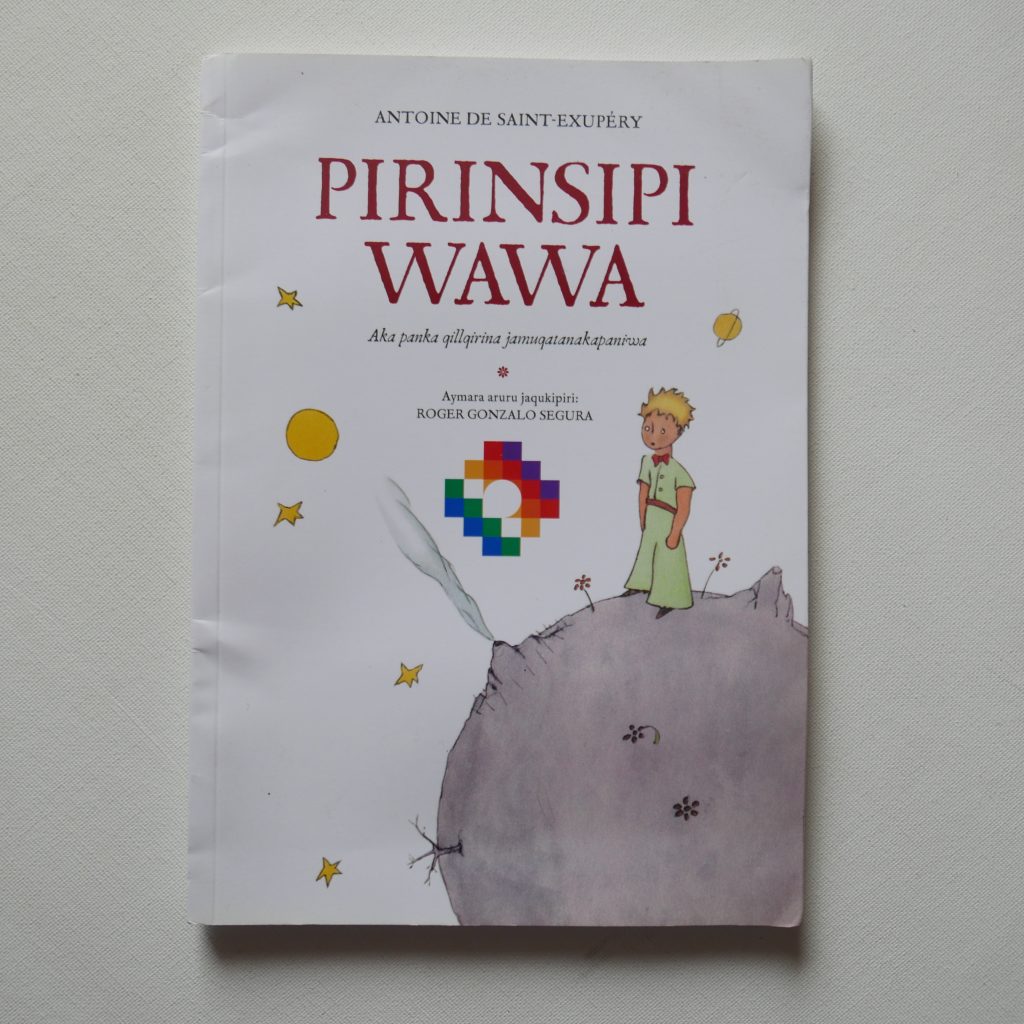
Pirinsipi Wawa, in Aymaran language.
Aymaran language is spoken by the Aymara people of the Andes. It is one of only a handful of Native American languages with over three and a half million speakers. Aymara, along with Quechua and Spanish, is an official language of Bolivia. It is also spoken around the Lake Titicaca region of southern Peru and, to a much lesser extent, by some communities in northern Chile and in Northwest Argentina.
Aymara has a long history, dating back at least 2,000 years. It has been influenced by the languages of the pre-colonial civilisations that existed in the region, as well as by Spanish, which was introduced during the colonial period.
Aymara has a unique phonological system, with a contrast between voiced and voiceless ejectives, which are produced by closing the glottis and then releasing a burst of air. It also has a complex system of vowels, with three distinct lengths and three nasal vowels.
The grammar of Aymara is agglutinative, which means that words are constructed by adding affixes to a root form. Aymara has a rich system of noun and verb inflection, including several cases and conjugations to indicate tense, aspect, and mood.
One of the unique features of Aymara is its use of grammatical markers for spatial relationships. For example, instead of saying “I am going to the store,” an Aymara speaker would say something like “I am going towards the store,” with a different marker used depending on the direction of the movement.
Aymara is an important part of the cultural heritage of the Aymara people, and has been used in a wide range of contexts, including literature, music, and political activism. Despite the challenges posed by ongoing social and political changes in the region, efforts are underway to promote the use and preservation of the Aymara language for future generations.


